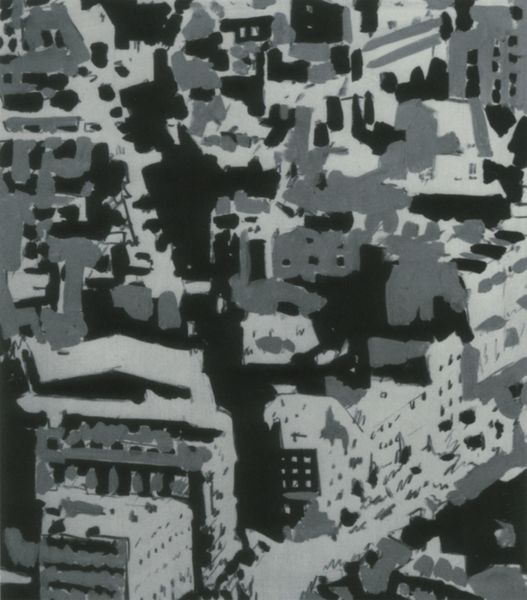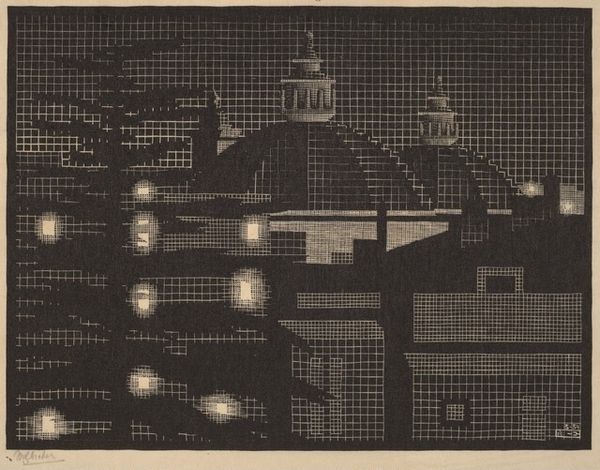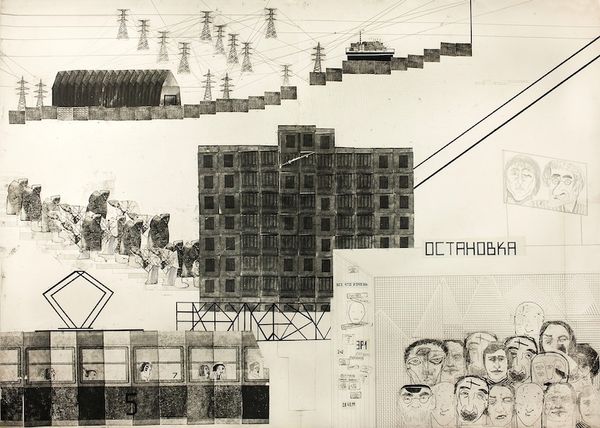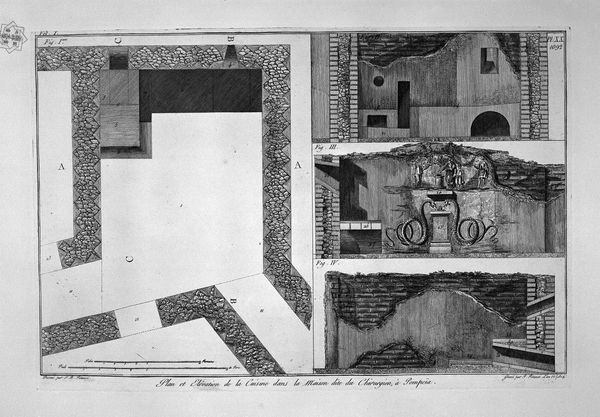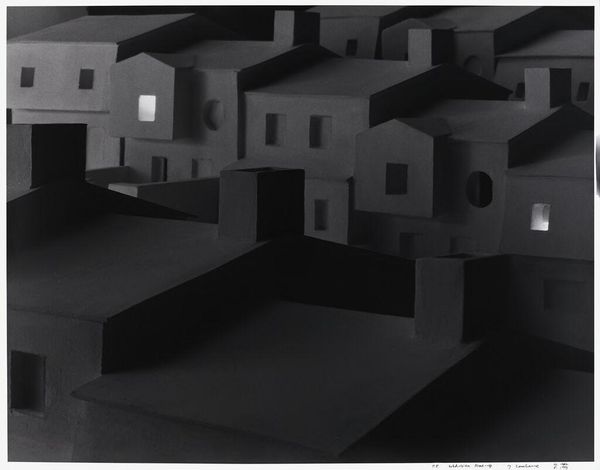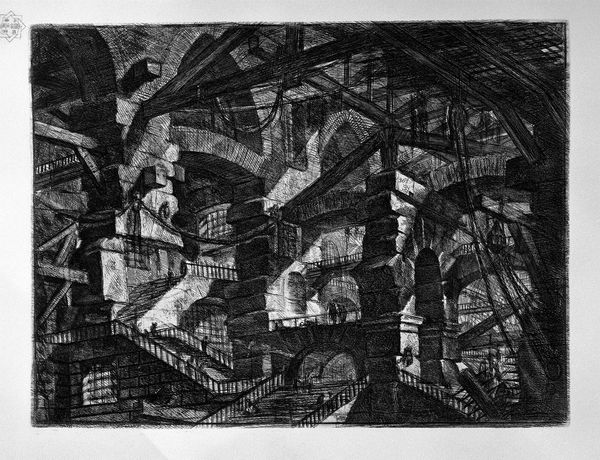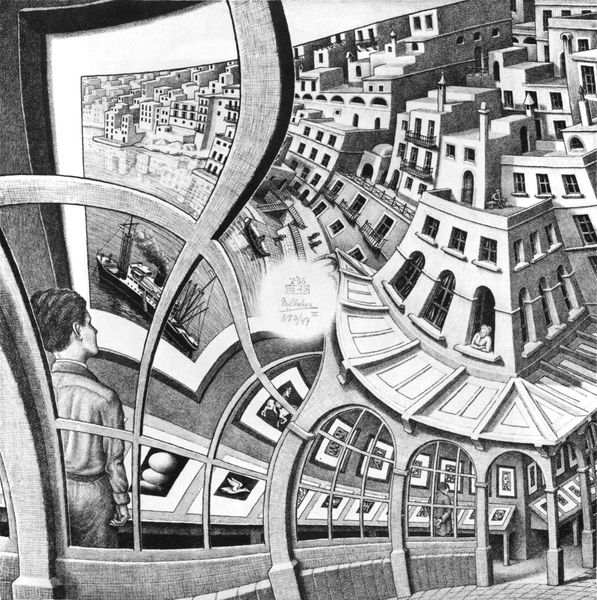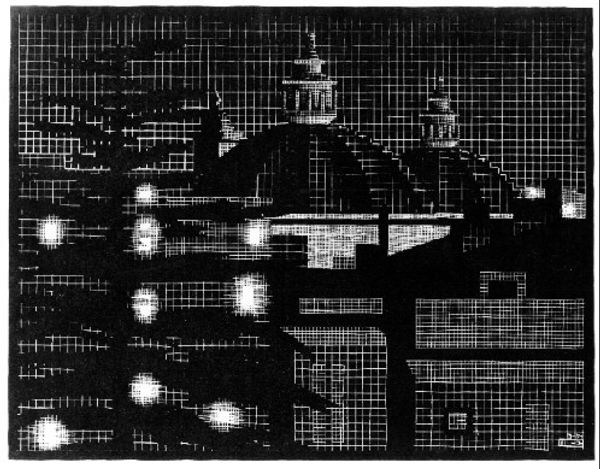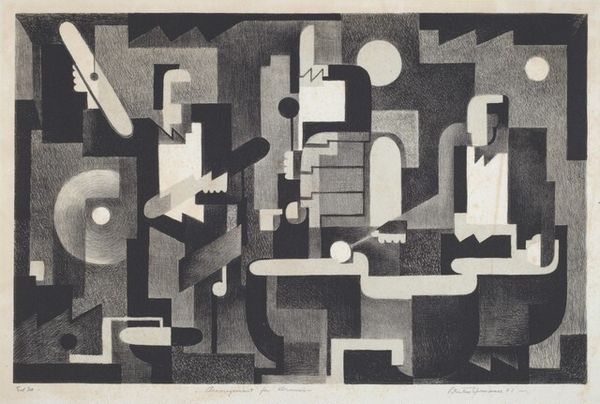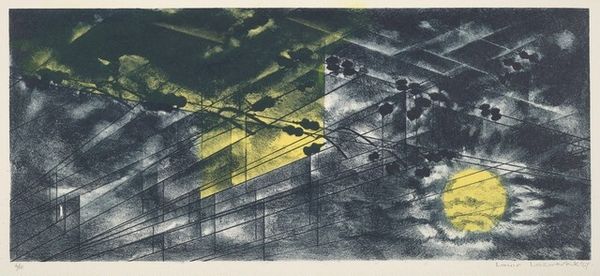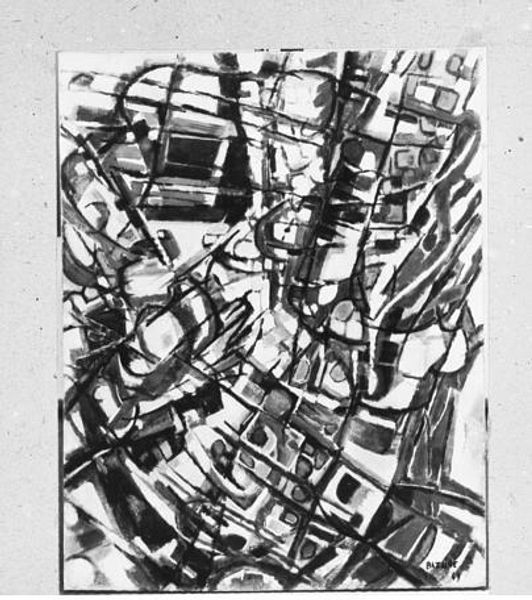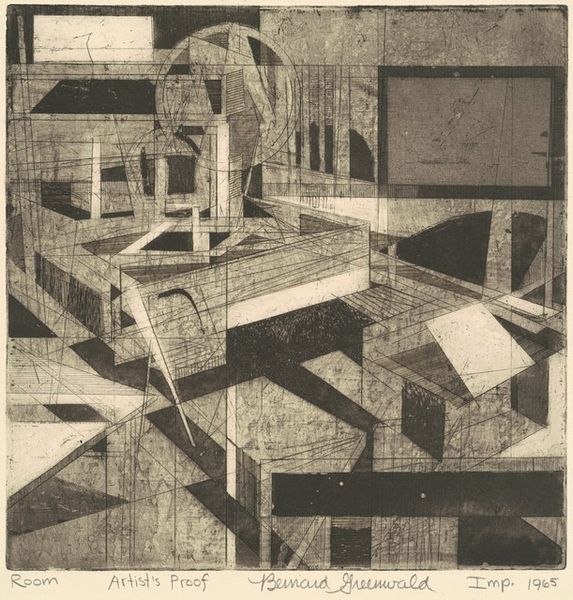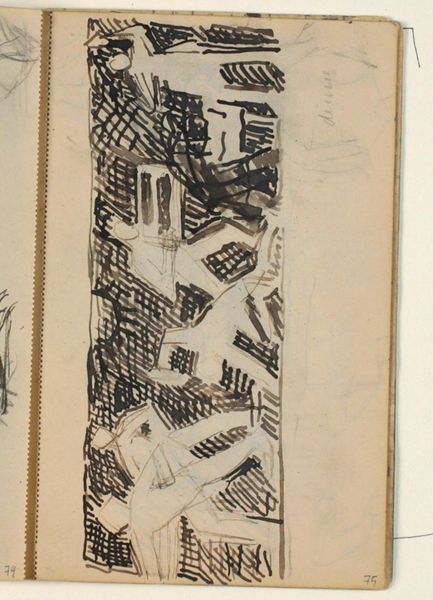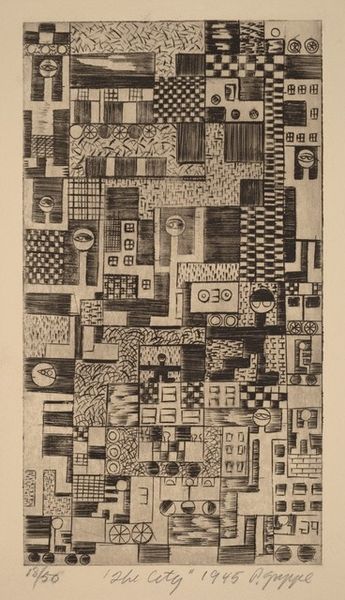
Copyright: M.C. Escher,Fair Use
Curator: M.C. Escher’s “Metamorphosis III excerpt 7” created in 1968 using graphite on print, takes the notion of graphic transition to an entirely different level, a new paradigm of figuration! What do you feel when you observe the picture? Editor: Whoa. My brain just did a backflip. It's like watching one reality bleed into another. Stark, unsettling, but undeniably magnetic! Curator: This is exactly the intention of this composition which combines abstraction and surrealism. Escher utilizes symbolic shapes—birds morphing into geometric shapes, into an Italian village, which ultimately resolves in the details of chess pieces, all presented in that signature monochromatic palette. Why do you think these distinct shapes blend? Editor: The movement from flocking birds into stark architecture, like some orderly, existential game board—it suggests destiny. Like we're all pieces on some grand, unknowable chessboard, being transformed by each move. Curator: The artwork definitely delves into deep allegories by reflecting our psychological experience! Each shape triggers different references, a visual manifestation of cultural shifts, almost as if collective memories were morphing together. Editor: Definitely. The chess pieces themselves hint at strategy, but the game feels secondary. What remains prominent is our constant transformation, the unsettling realization that who we are now is merely a stage of being! Do you think the birds at the start mean anything specific? Curator: I believe that this refers to our need for belonging, it mirrors humanity in its communal essence. Yet, as the image shifts, our identities appear pre-figured. It’s about transformation but also predetermination in metaphysical representation! Editor: Transformation, yes, that's key! You know, I get the unsettling feeling that this transformation continues even beyond the frame, beyond what we can see or comprehend! Curator: Absolutely! That continuous potential for change is where Escher makes his stand. I would like to also mention his inspiration comes from mannerism because of its exaggeration of form, space, and perspective. But he makes it contemporary through modernist visuals. Editor: Absolutely mind-bending stuff. My concept of the world has officially been tilted on its head! I might need a glass of something before processing this one! Curator: (laughing) Likewise! Seeing the mannerism as an exaggeration through modern visuality in real life, has definitely enhanced our perspective on the artwork.
Comments
No comments
Be the first to comment and join the conversation on the ultimate creative platform.
